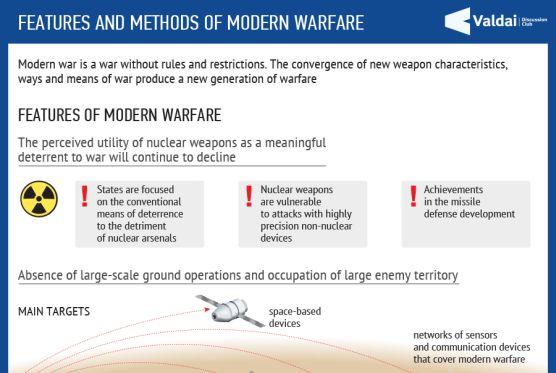New Arms Race: Deterrence or Destruction Game?
© Associated Press
While we wait for the arms race resumption between the US and Russia, the real and dangerous arms race is unfolding in Asia. Unfortunately, it has every chance to get out of control.
The prospect of a broad arms race should be considered in light of various factors.First, a few words about the "arms race" concept. Is this just another but obviously not the last stage of the constant competition between offensive and defensive weapons? Or can it reach such an extraordinary level, when superiority in some types of armaments is crucial to ensure the survival of the state, as it was during the Cold war? I think no. Neither the U.S. nor Russia will be willing to shell out on the table the last dollar or ruble to give it to developers of new nuclear warheads or hypersonic drones.
In the competition of combat systems and states, there are always moments when one party moves forward, introducing new technologies and concepts. The balance of military potentials of Russia and the United States has always been in a state of unstable equilibrium. The US and Russia and China have adequate reserves of nuclear weapons, as well as of the technology of so-called "lightning strike" in order to prevent the other side to move forward to create a dangerous "stable disequilibrium", giving one of the parties a guaranteed (and most importantly - realized) advantage.
Moreover, what is the reason now in a surprise nuclear or other comparable strike by one of the parties, even if we take into account the tensions between the two countries? What problem such a strike can resolve? To pressure on Russia the US has already used a wide range of economic, political and informational measures. To draw the Russian leadership into the uncontrolled defense spending is hardly realistic. So, neither the motivation nor the conditions are suitable for a huge investment into the arms race at any cost. The main strategic goal is deterrence, rather than the destruction of the other side.
What, then, can affect the situation? There are several factors to accelerate or to limit the arms race.
Nuclear forces, as a guaranteed deterrence, are ageing, and after some time they need to be updated. It is difficult to say, how radical and fast will be this update, especially in the absence of real prospects of nuclear war and budget deficits in the US and Russia. One trillion dollars in 30 years, which mentions the influential NYT, is not so much, especially when this spending has yet to be pushed through Congress. It will unfold the fight for a budget between lobbyists from the states where the nuclear industry is concentrated and those who have their own visions on the Pentagon's money. So again we will hear cries about "US standing behind", the "Russian threat" or "the growth of the Chinese aggression." However, the task of the military is to ensure security of the country. It would be strange if they, whether in the US or in Russia, cease to ask for money for defense and to silence the alarm bells about the growth of the opponents military potential!

Infographics: Features and Methods of Modern Warfare
Moreover, the nuclear technologies are currently traditional, not game-changing. The military institutions and defense industry corporations, such as Lockheed Martin, are likely to invest into the development of new dual purpose technologies, where you can develop a range of new products and materials, including civilian ones. For example, we are talking about the same hypersonic, bio- and cyber technologies, artificial intelligence, etc. Moreover, it is quite possible that major investments will go into the development and research, but the production of the weapons themselves would be small-scale. The main purpose is to create a technological reserve to prevent competitors to break away. Competitors will also look for a breakthrough, but such opportunities are now unlikely to remain in the traditional military areas.
However, while we wait for the arms race resumption between the US and Russia, the real and dangerous arms race is unfolding in Asia. Unfortunately, it has every chance to get out of control.
There are unresolved issues between Saudi Arabia and Iran, India and Pakistan, China and India, Japan and China, Vietnam and China, as well as other countries in the region. There is a fierce competition for regional economic and political leadership. Tension is growing, regional alliances are rebuilding before our eyes. All of these countries, as well as Turkey and South Korea, have serious economic and military potential, they invest into the purchase of their own and imported weapons. Growing economies allow them from year to year to build up military capacity and stimulate ambitions. Surely, the competition in Asia will be strongly supported by the United States, because it allows to adjust the balance of power in the region for their own benefit, primarily to deter China and Iran.
This arms race is occurring together with the weakening of the international regulatory organizations, destabilization in large parts of South Asia, presence of nuclear weapons in a number of states, absence of mutual deterrence system and lack of management experience in international crises. This is already a global problem. It can be solved only together, by creating a security system, which determines the rules of conduct for the whole Greater Eurasia. A system of collective security would prevent the uncontrolled expansion of the nuclear club, and hinder the transfer of nuclear weapons in the hands of terrorists. SCO could become the basis of the Eurasian security system. Russia should set an example of foresight and responsibility, to initiate the establishment of such a system.
Views expressed are of individual Members and Contributors, rather than the Club's, unless explicitly stated otherwise.




